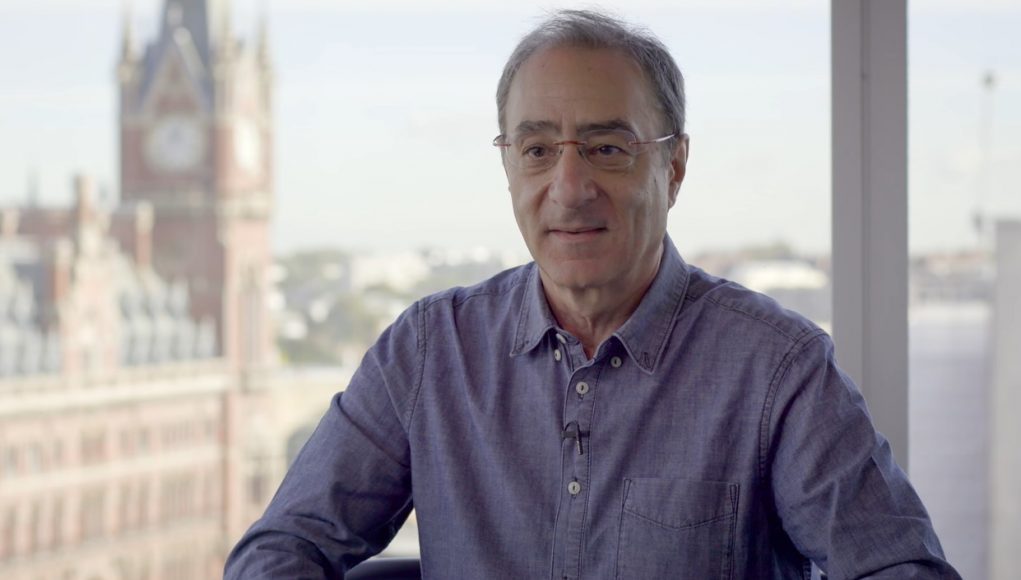 VR Presence researcher Mel Slater is fascinated by what makes the medium of virtual reality unique and different from other communications mediums. He says that VR activates our sensorimotor contingencies in a way that fools our brain that we’re transported into another world, and that what is happening is real. He breaks this into two primary illusions where the Place Illusion answers the question “Am I there?” and the Plausibility Illusion answers the question “Is this happening?” These two illusions happen inside of your mind and are very difficult to study, but Slater has develop an experimental research protocol that draws inspiration from color theory research the combination of the objective spectral distribution as well as an individual’s subjective perception of color.
VR Presence researcher Mel Slater is fascinated by what makes the medium of virtual reality unique and different from other communications mediums. He says that VR activates our sensorimotor contingencies in a way that fools our brain that we’re transported into another world, and that what is happening is real. He breaks this into two primary illusions where the Place Illusion answers the question “Am I there?” and the Plausibility Illusion answers the question “Is this happening?” These two illusions happen inside of your mind and are very difficult to study, but Slater has develop an experimental research protocol that draws inspiration from color theory research the combination of the objective spectral distribution as well as an individual’s subjective perception of color.
After seeing well over a thousand VR experiences, I started to cultivate my own ideas about an Elemental Theory of Presence that describes different qualities of Embodied Presence, Social & Mental Presence, Active Presence, and Emotional Presence. Slater says that these different qualities of experience are more related to the content of the experience, and that they’re not unique to virtual reality. You can be just as emotionally engaged with a movie or a book as you are with a VR experience, and so looking at how the content contributes to his conceptualization of presence isn’t an interesting research question trying to figure out what’s unique about VR.
My elemental theory of presence is more of an elemental framework for experiential design that’s isn’t unique to VR, but it has been useful in helping to understand the component parts of a VR experience. Slater is primarily interested in researching the objective and measurable dimensions of a VR experience that contribute to the place illusion and plausibility illusion that he sees are the primary factors of the subjective feeling of presence. I personally don’t believe that you disregard the role content in how it helps cultivate a feeling of presence, but I acknowledge that it’s a difficult thing to study in controlled academic research environment. There is not a universal formula for what combination of content and experience ingredients that will help you achieve a sense of presence whether you are in VR or not. There are limits to predicting the degree to which a piece of content will resonate with someone, and the successful approaches are usually market-based solutions that big data collections of behavior to drive the content recommendation algorithms at Amazon, Netflix, Facebook, and Google.
My interview with Slater explores the threshold of the boundaries of his theory of presence as I try to understand it through the lens of my own elemental framework of experiential design. He cites NASA’s Stephen Ellis who once said that any good theory of presence will provide a series of tradeoffs that allows you to make choices amongst features that are within the same “equivalence class.” Slater’s approach to presence focuses on the objective features of the VR system while my elemental theory of presence focuses on the qualitative aspects of the specific content. Slater says that it’s a completely valid approach, but that it’s just completely different than what he’s interested in looking at. This conversation clarified for me the differences between objectively controllable VR hardware & software variables and the specific content of a VR experience. I think that both contribute different things to the subjective feelings of presence, and experiential designers will have to take into account both the objective features of the VR hardware and software as well as the specifics of the content in order to create the qualities of presence that they’re striving for.
LISTEN TO THE VOICES OF VR PODCAST
Support Voices of VR
- Subscribe on iTunes
- Become a member of the Voices of VR Podcast Patreon
Music: Fatality & Summer Trip
Feature image courtesy Digital Catapult (Source)







